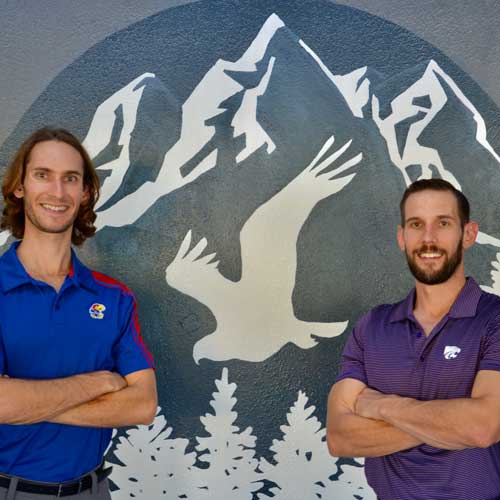
Introduction
Welcome to another insightful blog post from WildHawk Physical Therapy. In this article, we delve into the intricate world of shoulder instability—a condition that can significantly impact the function and comfort of the shoulder joint. Whether you’ve experienced recurrent dislocations or have concerns about shoulder instability, we’re here to unravel the details, from the anatomy of the shoulder to the causes, symptoms, and effective management strategies.
Shoulder Instability: A Complex Puzzle
Shoulder instability is a condition characterized by the excessive movement of the shoulder joint, leading to a range of symptoms from mild discomfort to recurrent dislocations. To comprehend this intricate puzzle, let’s start by exploring the anatomy of the shoulder:
- Glenohumeral Joint: The shoulder’s ball-and-socket joint connects the upper arm bone (humerus) and the shallow socket of the shoulder blade (scapula). While this design allows for remarkable mobility, it also makes the shoulder susceptible to instability.
- Ligaments and Tendons: The stability of the shoulder largely depends on a network of ligaments and tendons that surround and support the joint. Ligaments connect bone to bone, while tendons connect muscle to bone.
Types of Shoulder Instability
Understanding the types of shoulder instability is crucial for a comprehensive view:
- Traumatic Instability: Typically a result of a sudden injury or dislocation, traumatic instability occurs when the ligaments supporting the shoulder are stretched or torn.
- Atraumatic Instability: This form of instability develops without a specific injury and may be associated with muscle imbalances, overuse, or inherent ligament laxity.
Symptoms of Shoulder Instability
Shoulder instability can manifest through a variety of symptoms, and the nuances of these signs provide valuable information:
Recurrent Dislocations: One of the hallmark symptoms is the tendency for the shoulder to dislocate, often with certain movements or activities.
Feeling of Instability: Individuals with shoulder instability may describe a constant feeling that the shoulder is “slipping” or “giving way,” even without a complete dislocation.
Pain and Discomfort: Persistent pain, especially during specific movements or after activities, can indicate underlying instability.
Limited Range of Motion: Instability can lead to a reduced range of motion in the shoulder, impacting daily activities and athletic performance.
Causes of Shoulder Instability
Several factors contribute to the development of shoulder instability, each contributing to the intricate puzzle:
Trauma or Injury: A significant impact or injury, such as a dislocation, can stretch or tear the ligaments, leading to instability.
Muscle Imbalances: Weakness or imbalances in the muscles around the shoulder, particularly the rotator cuff, can compromise joint stability.
Connective Tissue Conditions: Some individuals may be predisposed to ligament laxity due to genetic factors or connective tissue conditions.
Overuse or Repetitive Strain: Activities involving repetitive overhead motions or strain on the shoulder can contribute to instability over time.
Diagnosis and Evaluation
To unravel the details of shoulder instability, a thorough diagnosis is essential. This typically involves:
- Medical History: Understanding the individual’s history of shoulder dislocations, injuries, or any relevant symptoms.
- Physical Examination: Assessing shoulder mobility, strength, and stability through a series of tests and maneuvers.
- Imaging Studies: X-rays, MRI, or CT scans may be employed to visualize the structures of the shoulder joint and identify any abnormalities.

Treatment and Management Strategies
Managing shoulder instability involves addressing the intricate factors contributing to the condition:
- Conservative Approaches: Physical therapy plays a pivotal role in strengthening the muscles around the shoulder, improving stability, and correcting imbalances. Therapists employ targeted exercises, stretches, and manual techniques tailored to the individual.
- Bracing and Support: In certain cases, the use of braces or supports may be recommended to provide additional stability to the shoulder joint.
- Activity Modification: Adjustments to daily activities or exercise routines can prevent overuse and minimize the risk of dislocations.
- Surgical Intervention: For severe cases or recurrent dislocations, surgical procedures may be considered. This can involve repairing torn ligaments, stabilizing the joint, or addressing underlying issues.
Rehabilitation and Recovery
Navigating the details of shoulder instability requires a dedicated rehabilitation process:
- Post-Surgery Rehabilitation: Following surgical intervention, rehabilitation focuses on gradually restoring range of motion, strength, and function while allowing the surgical site to heal.
- Progressive Strengthening: Progressive strengthening exercises are crucial to rebuild muscle strength and enhance shoulder stability.
- Functional Training: Emphasis on functional movements and sport-specific exercises ensures a safe return to regular activities and sports.
Preventing Recurrence and Long-Term Management
Effectively managing shoulder instability involves a commitment to long-term strategies:
- Muscle Maintenance: Regular strength training and exercises to maintain shoulder muscle strength and stability.
- Posture Awareness: Maintaining proper posture and body mechanics to reduce stress on the shoulder joint.
- Regular Monitoring: Periodic check-ins with healthcare professionals to monitor shoulder health and address any emerging concerns.
WildHawk Physical Therapy – Your Partner in Shoulder Health
For those grappling with shoulder instability, the experienced team at WildHawk Physical Therapy in Asheville, NC, is here to provide guidance and support. If you’re experiencing symptoms of shoulder instability or have concerns about your shoulder health, don’t hesitate to reach out to us for a thorough evaluation and personalized treatment plan. Your journey to shoulder stability and comfort starts with us.
FAQ Section
Frequently Asked Questions:
- Q: Can shoulder instability be managed without surgery?
A: Yes, many cases of shoulder instability can be effectively managed through conservative approaches such as physical therapy, bracing, and activity modification. - Q: Is shoulder instability common in athletes?
A: Yes, athletes involved in sports that require repetitive overhead motions or are prone to traumatic shoulder injuries may be at a higher risk of developing shoulder instability. - Q: How long does recovery take after surgical intervention for shoulder instability?
A: Recovery time varies depending on the type of surgery and individual factors. Physical therapy is typically a crucial component of the post-surgery rehabilitation process. - Q: Can shoulder instability lead to long-term complications if left untreated?
A: Recurrent dislocations or untreated shoulder instability can lead to chronic pain, reduced shoulder function, and an increased risk of further injuries.
In conclusion, understanding and managing shoulder instability involves a careful examination of its intricate details. Whether through conservative approaches or surgical intervention, the goal is to provide individuals with effective strategies for restoring shoulder stability and function. If you suspect shoulder instability or have concerns about your shoulder health, don’t hesitate to consult with the experts at WildHawk Physical Therapy for personalized care and support.









